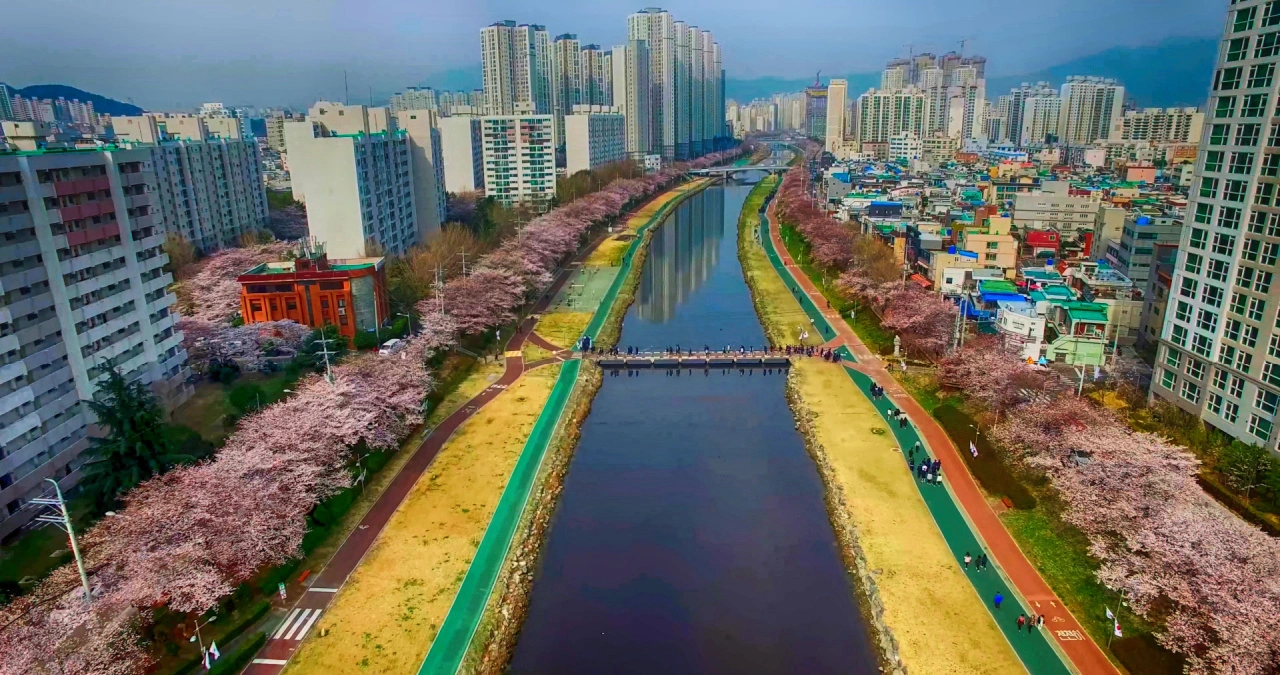Embark on a captivating journey through South Korea’s enchanting cities, where culture meets opportunity for educators.
In Seoul, discover a vibrant blend of ancient palaces and modern skyscrapers—a cultural playground for teachers. Venture to Busan for beautiful beaches and the lively Gamcheon Culture Village, an inspiring atmosphere for educators. Daegu offers historical sites and access to scenic Palgongsan Mountain, creating a diverse setting for exploration and education.
Incheon, known for its international vibe, beckons with attractions like Chinatown and serene Incheon Grand Park—a cosmopolitan experience for both locals and educators. Keep reading to discover the charm of these South Korea cities, each providing a unique blend of culture, history, and natural beauty.
Whether you’re a teacher seeking a new adventure or a curious traveler, this journey promises to ignite your passion for learning and exploration.
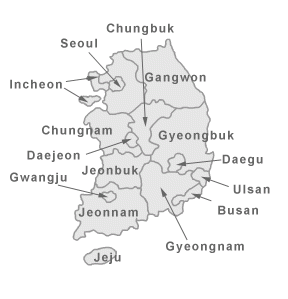
Teaching in Seoul
Seoul is famous for its lively mix of ancient palaces, modern skyscrapers, and bustling street life, providing an exciting cultural experience.
Seoul is Korea’s largest city by far, with well over 10 million people in its urban core and 10 million more in neighbouring cities and suburbs. As a result, Seoul is also one of the largest and most densely populated cities in the world, and it is considered the hub of commerce, politics, and entertainment in Korea.
When it comes to shopping, food, and entertainment, Seoul is a paradise! Dongdaemun and Myeongdong are popular shopping districts with high-end department stores and a great selection of Korean foods. Art enthusiasts will love the Insadong district, known for artwork depicting Korean culture at its finest, and Hyehwa, the performing arts centre of Seoul. Entertainment options abound in Hondae and Sinchon, the parts of Seoul known for clubs, restaurants, and bars. Seoul also has the world’s largest indoor amusement park, Lotte World; the park even contains a hotel and shopping mall.
For those looking to escape the fast-paced city life and enjoy the summer weather, the beaches of Yeonjong Island are not far away. The city also has much to offer in the way of tradition and culture. Seoul is also home to a number of historic palaces, museums, and temples built during the Joseon Dynasty, including famous museums and temples. Seoul Official Website
Teaching in Busan
Busan is renowned for its beautiful beaches, vibrant markets, and the charming Gamcheon Culture Village, offering a diverse and lively atmosphere.
This city of over three million is highly regarded as Korea’s most important port, and it is Korea’s second largest city after Seoul. Busan has a temperate climate, with December through March the coldest months and June through August the hottest. Busan’s first-rate hotels and restaurants make it a great destination for travelers in Korea. The city also boasts stunning beaches, excellent shopping, and several major attractions, including Taejongdae temple. Seafood enthusiasts will delight in the Jagalchi Market, one of the most largest and most famous fish markets in Korea.
Busan is also renowned for the Pusan International Film Festival (PIFF). The PIFF takes place every year in October, attracting filmmakers and moviegoers from all across the country. Busan Official Website
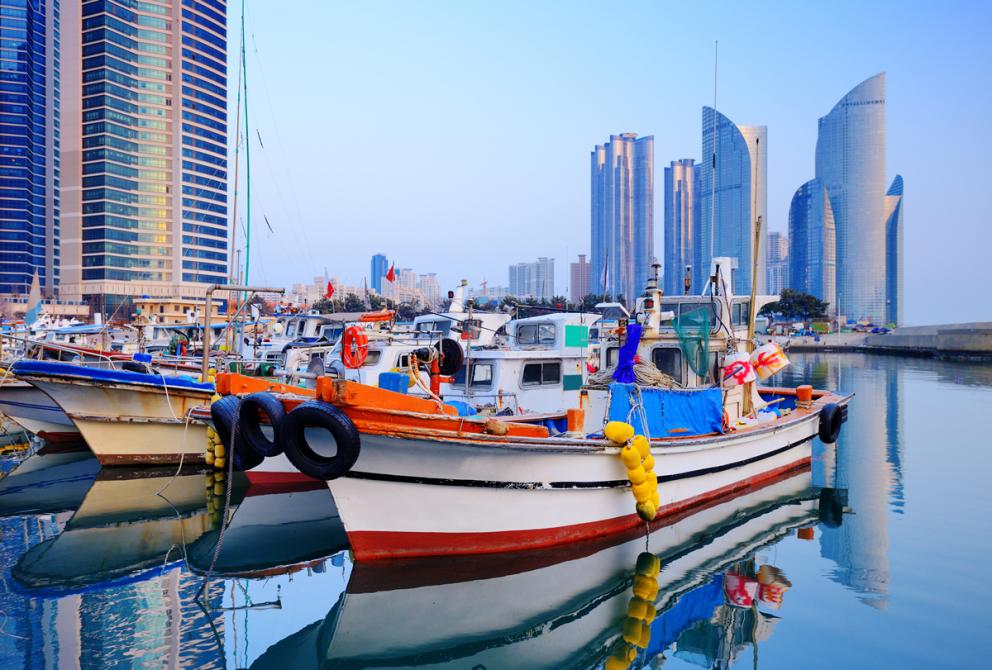
Teaching in Daegu
Daegu is known for its historical sites, lively festivals, and access to the scenic Palgongsan Mountain, providing a culturally rich and diverse setting.
Located near Busan, Daegu is a city of over two million people. It is one of the largest cities in Korea after Seoul, Busan and Incheon. Because of Daegu’s location in southeastern Korea, its climate is somewhat mild. While the summers are hot like other parts of the country, winters in Daegu tend to be warmer on average.
The city is located nearby many popular tourist sites, including Mount Palgongsan, Jikjisa Temple and Juwangsan National Park. Many of the nearby parks that surround the city have historic Buddhist temples that attract visitors from all over the world. Duryu Park, at the foot of Duryu Mountain, has numerous walking trails and a large amusement park among other attractions. Daegu Official Website
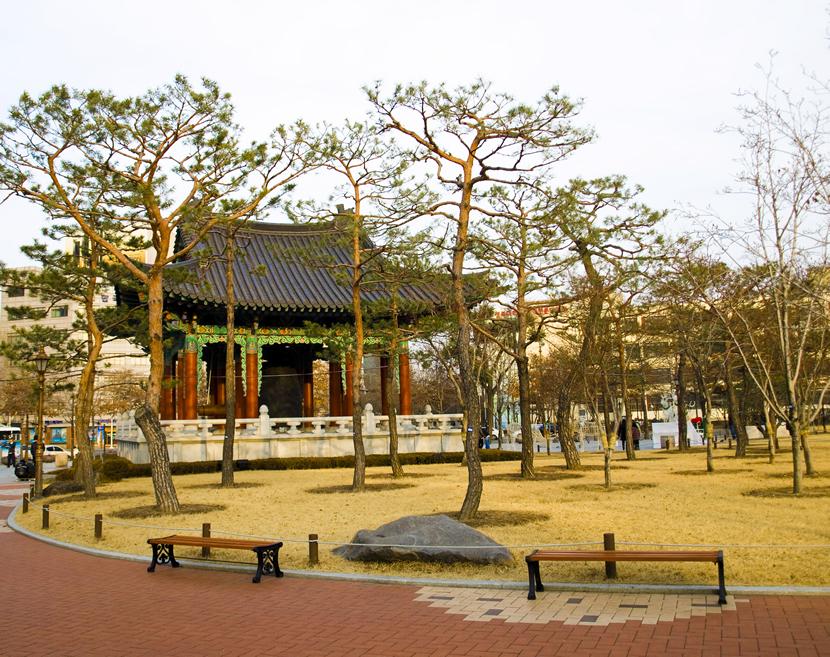
Teaching in Incheon
Incheon is recognized for its international vibe, with attractions like Chinatown and the serene Incheon Grand Park, offering a cosmopolitan experience.
Incheon is a vibrant, sprawling city located in the northwestern part of Korea, very close to Seoul. Due to the cities’ close proximity and a direct subway line from Incheon to Seoul, many people travelling to Seoul will travel through Incheon International Airport.
The area is famous for its beautiful islands and beaches, especially the Muuido and Sido Islands, where numerous television dramas have been filmed in the past. The city is also home to several colleges and universities. Interestingly, it was the first district in Korea to be receptive to Western culture and in 2007, the city declared itself an “English City”. This was done for the purposes of enhancing Incheon as a business and commercial hub in Northeast Asia. Incheon Official Website
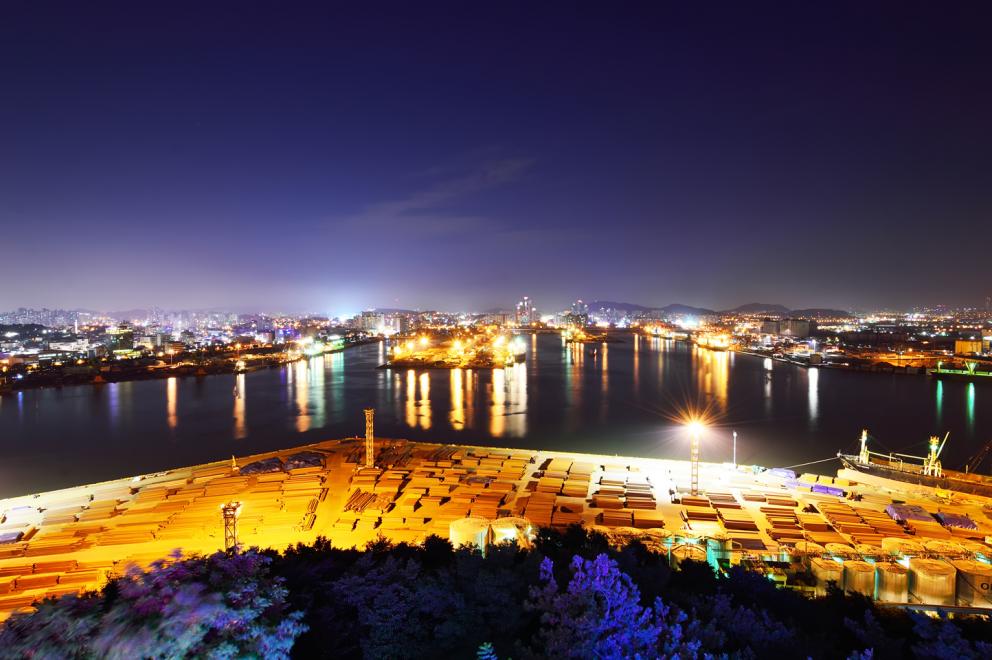
Teaching in Gwangju
Gwangju is famous for its artistic scene, historical sites, and the lush Mudeungsan National Park, providing a unique blend of culture and nature.
The city of Gwangju is four hours south of Seoul and is considered a smaller city, with a population of one million. Gwangju is most famous for its flourishing arts communities and its delicious local cuisine. The city hosts numerous festivals each year, making it an excellent destination year-round. The most famous festivals are the Kimchi Festival, and the Gwangju Biennale, a much-loved art exhibition.
Outdoor recreation options in Gwangju include several parks and the nearby Mount Mudeung, which is a great spot for hiking. The region surrounding Mount Mudeung is infamous for its delicious watermelons, which were once given as gifts to kings. Gwangju Official Website
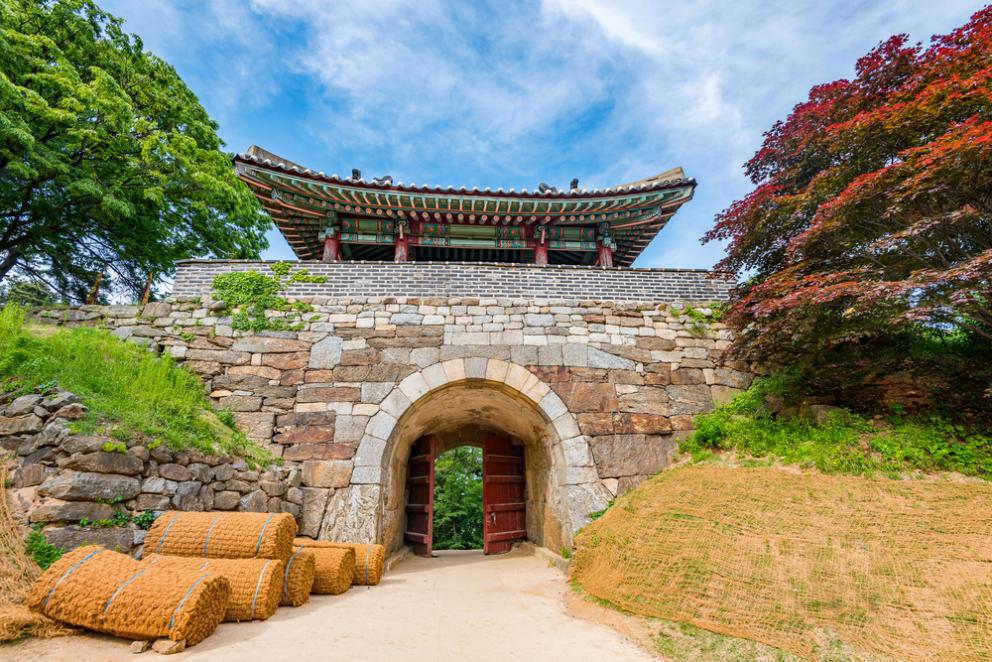
Teaching in Daejeon
Daejeon is known for its focus on science and technology, with attractions like the Daedeok Science Town and relaxing Yuseong Hot Springs, offering an intellectually stimulating environment.
Daejeon is located in central Korea, in a geographic location that allows for travel to any part of Korea in less than a day. It is Korea’s sixth largest city and has a climate that is heavily influenced by the nearby mountains. Because of its mountain location, Daejeon typically receives more frequent snowfall that other areas of the country. Winter temperatures are usually below freezing, while the summer can be hot and humid. The city is completely surrounded by four mountains: Mount Gyeoryong, Mount Gyejok, Mount Sikjang and Mount Manin.
There are numerous archaeological sites of the Baekje Dynasty in Daejeon, such as the Muryeongwangneung Tomb and Gongsanseong Fortress, a world heritage site. The area also has an abundance of ginseng fields, making it popular among domestic and foreign visitors looking to purchase high quality ginseng. Daejeon Official Website

Teaching in Ulsan
Ulsan is recognized for its industrial importance, beautiful coastal areas, and the scenic Taehwagang Grand Park, providing a mix of urban and natural experiences.
Ulsan is a city of one million, located on the southeastern coast of Korea, next to the Sea of Japan. Ulsan is one of the cities in Korea that has a relatively mild climate. Ulsan is home to several castles and fortresses from the Shilla Dynasty, and is becoming a more popular tourist destination. In addition to historical sites, the city also offers a wide variety of art galleries, museums, and cinemas.
The city is also known for environmental attractions, such as a popular bike path along the Taehwa river, a winter migratory bird habitat, and the Mount Shinbul nature park. Ulsan Official Website
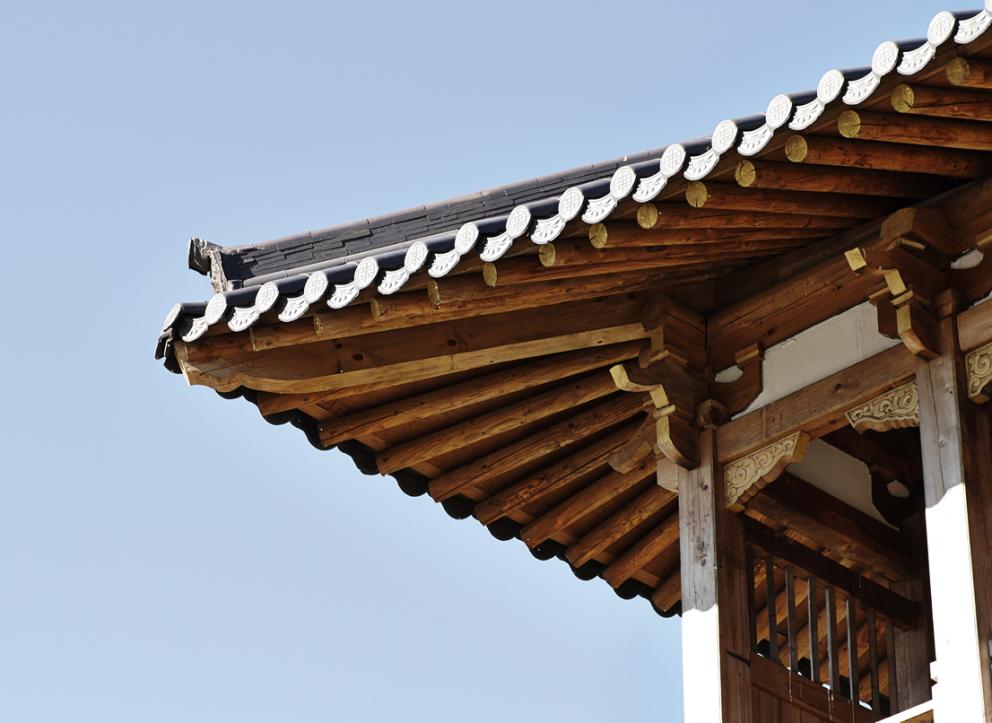
Teaching in Gyeonggi
Gyeonggi is known for its proximity to Seoul, historic landmarks like Suwon’s Hwaseong Fortress, and the Everland theme park, offering a diverse range of experiences.
Gyeonggi is by far the most populous region of Korea as it is the province in which Seoul is located. Gyeonggi’s most popular attraction is the Demilitarized Zone (DMZ) tour at the border between North and South Korea. There is a distance of four kilometres between the two sides which forms this zone. The border itself is still guarded by soldiers from both countries and it is the most heavily guarded border in the world.
The province of Gyeonggi has a population of over 10 million people, and it is home to a Korean folk village park. The Korean folk village is a great destination to experience the traditions and past lifestyle of Koreans. This park is made to resemble a village in an English-speaking country in which guests experience cultures of the world from an English perspective. For native Koreans, it is designed to increase their motivation to learn English. Gyeonggi Official Website
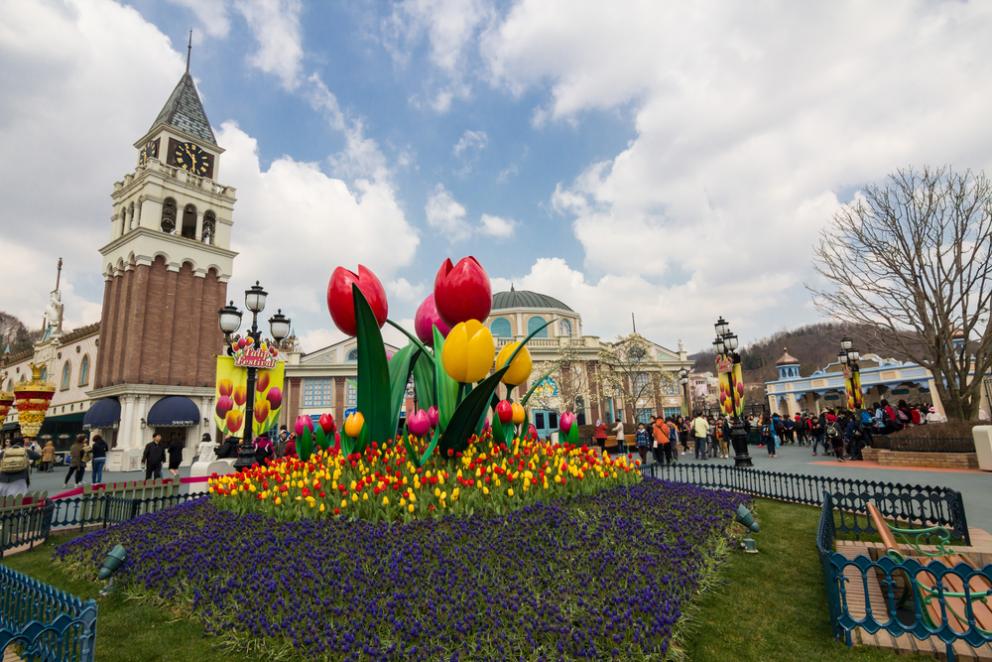
Teaching in Gangwon
Gangwon is famous for its stunning natural landscapes, including Seoraksan National Park and scenic beaches like Gangneung, providing a peaceful and picturesque setting.
The Gangwon region is one of the oldest in Korea; it was one of the eight original provinces during the Joseon Dynasty. Its northern boundary changed once Korea was divided into two following World War II and the subsequent Korean War. Gangwon has a very low population density compared to other parts of Korea, as it is a very large region with a population of just one million. However, despite its large size, the scenic east coast region is only a three hour drive from Seoul.
The Chuncheon and Namiseom Islands have become major tourist destinations in Korea. Widely viewed as having spectacular sunsets and plentiful recreation resorts, these sites attract both domestic and foreign tourists alike. A variety of water-sports such as kayaking, rafting and water-skiing are popular options in the summer. In winter, Yongpyong and Sunwoo resorts are excellent destinations for skiing. Gangwon Official Website
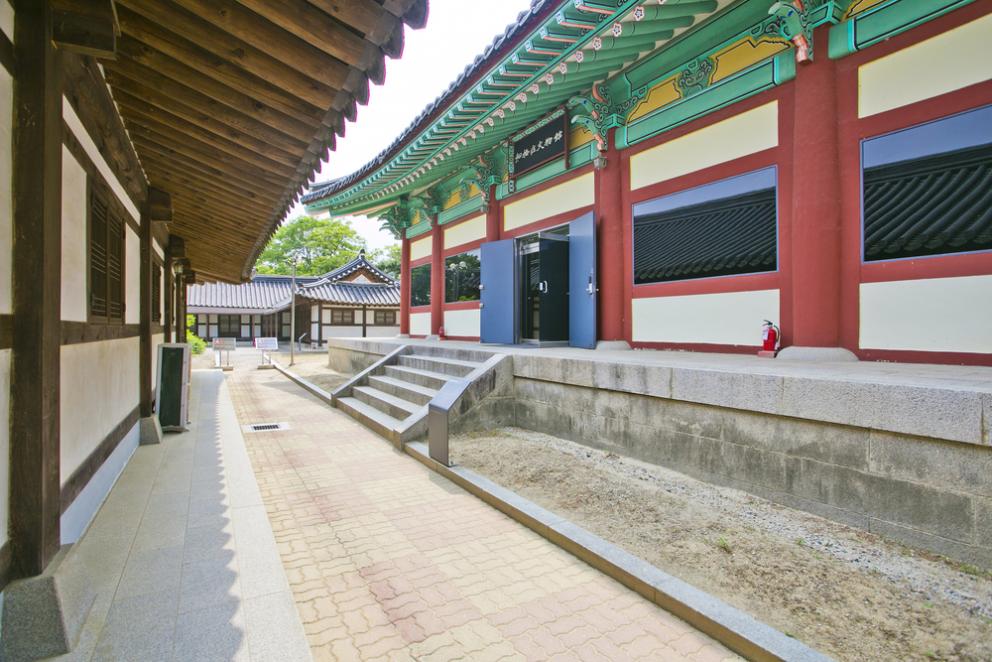
Teaching in Chungbuk
Chungbuk is known for its cultural heritage, historical sites like Beopjusa Temple, and the scenic Songnisan National Park, offering a serene and culturally rich environment.
This mountainous, land-locked region has a smaller population, and is a great location for those looking for a rural destination in order to experience the “real” Korea. Because of its mountainous location, many cities in Chungbuk receive more precipitation in the form of rain and snow than other areas of Korea.
Chungbuk has the one of the oldest temples in Korea, known as Beopjusa, found in Sobaek National Park. Nearby this famous temple is Mount Songni, a popular tourist spot due to the spectacular views of the surrounding valleys of Hwayang, Seonyudon and Ssanggok. Skiing is a very popular sport in the winter, and golf courses have been constructed to take advantage of the breath-taking scenery that the mountains provide. Chungbuk Official Website
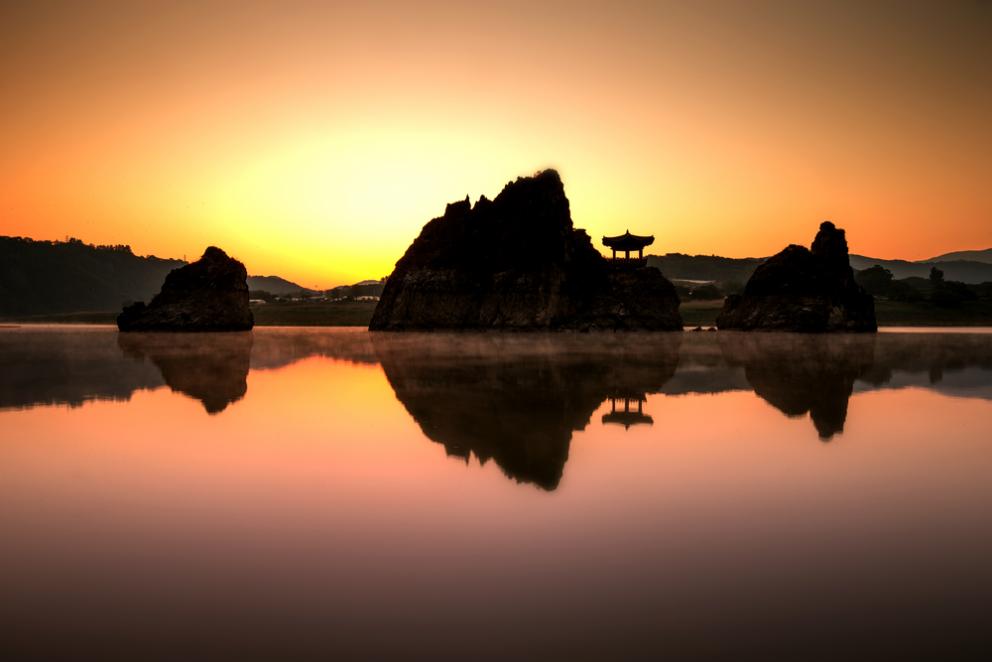
Teaching in Chungnam
Chungnam is renowned for its agricultural landscapes, historical attractions like Buyeo’s Baekje Cultural Land, and the scenic Gyeryongsan National Park, providing a peaceful and culturally significant experience.
Chungnam is a region in western Korea. Despite its small population, it remains an important area for transportation through the country. This is due to the frequent crossing of major rail lines and highways within the region. As a result, many travelers going between the northern and southern areas of the country will travel through Chungnam.
One of the biggest tourist destinations in this region is Mount Gyeryong, which stands at 845 metres. It is well known for its unique rock formations, and for nearby historic temples. For outdoor enthusiasts, Taean Marine National Park is a popular spot, with some of the best bathing beaches in the country. The Independence Hall of Korea is another big attraction in this area; it pays homage to those who fought against foreign invasions throughout history. Chungnam Official Website
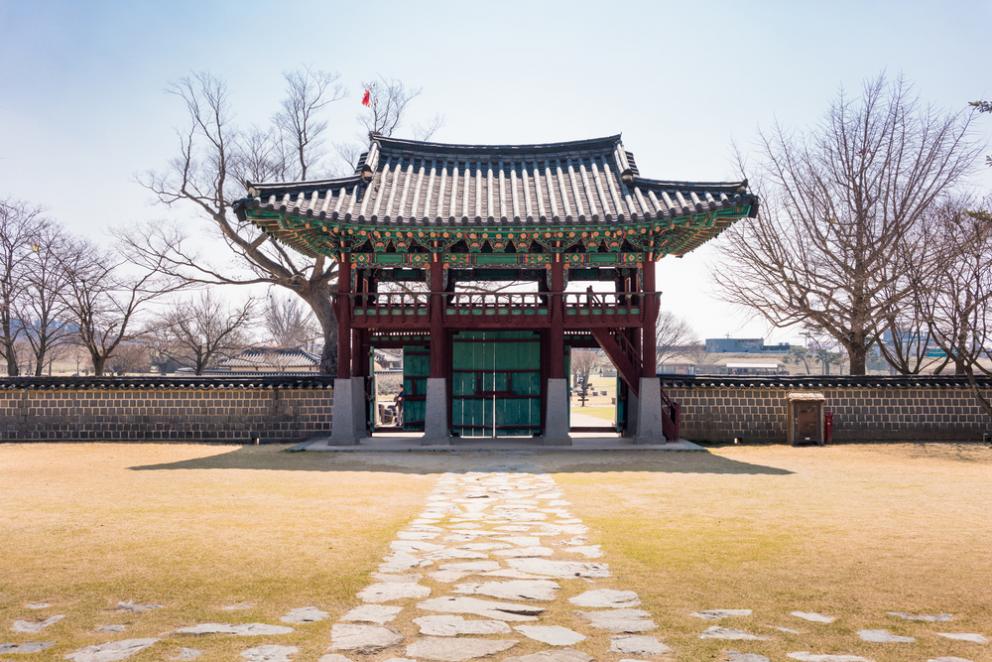
Teaching in Jeonbuk
Jeonbuk is famous for its historic Jeonju Hanok Village, vibrant food scene, and scenic Deogyusan National Park, offering a mix of cultural and natural attractions.
Jeonbuk, a region of about two million people, is known to have some of Korea’s best tasting foods. Jeonbuk also has a great natural environment, complete with mountains, parks, rivers and lakes. One of the most popular tourist attractions in Jeonbuk is Soswaewon Garden, located in Damyang. Its enormous bamboo trees attract visitors from all over the country. There are also numerous green tea fields in Boseong and Gurye that are cultivated in the spring.
Apart from also being a popular skiing region, Jeonbuk is also known for its abundant Korean souvenirs. A wide variety of companies in Jeonbuk can be found making souvenirs such as woodenware, bamboo fans, Korean paper and authentic jewelry.
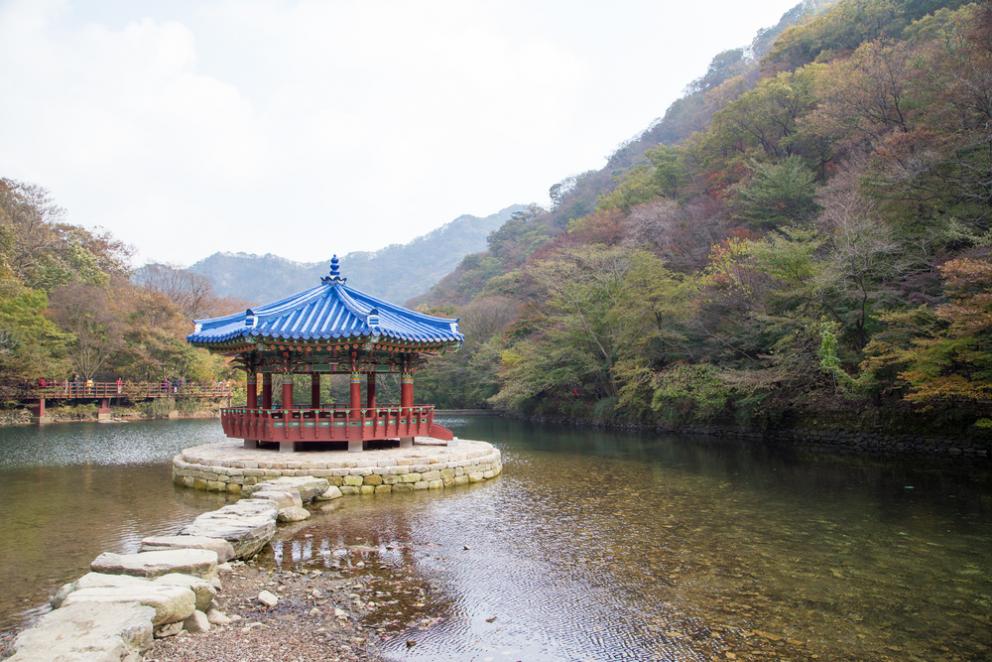
Teaching in Jeonnam
Jeonnam is recognized for its coastal beauty, historic sites like the Boseong Green Tea Plantation, and the serene Jirisan National Park, providing a laid-back and nature-centric experience.
Apart from Jeju, Jeonnam is the southernmost region of Korea with over 2,000 islands along the coastline, three-quarters of which are uninhabited by people. Jeonnam has the most mild climate in Korea, with average winter temperatures rarely dropping below the freezing mark. This coastal region is the country’s biggest cultivator of oysters and seaweed.
There are numerous water-based activities that can be found throughout Jeonnam and the islands. One of the fun and popular activities is the Open Water Swimming contest between Heuksando Island and Hongdo Island. Captain Cook’s Island Adventure is another popular option that offers adventure tours of the islands. Jeonnam Official Website
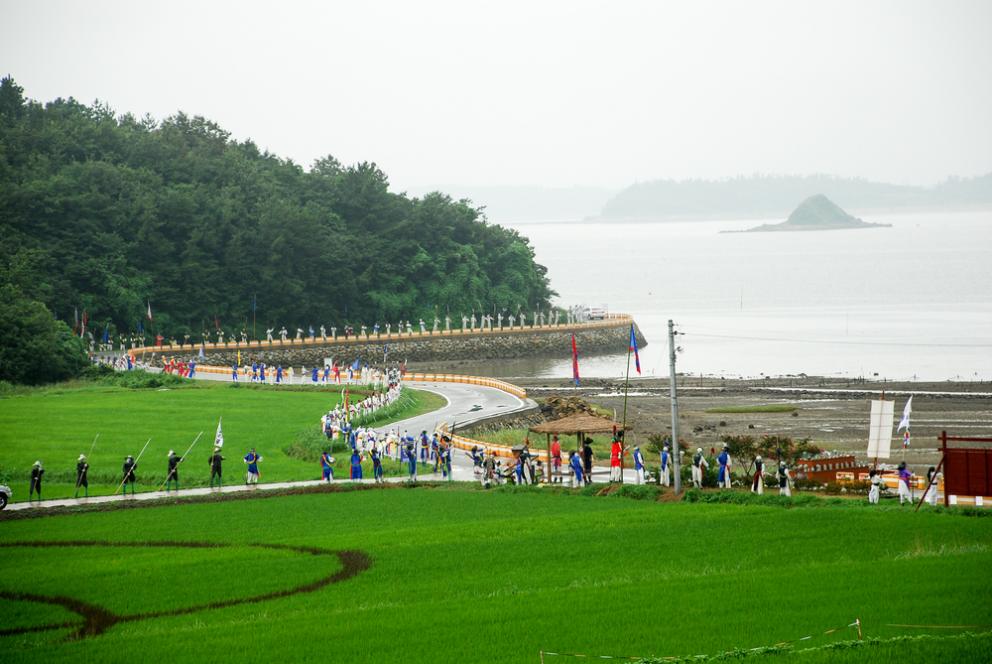
Teaching in Gyeongbuk
Gyeongbuk is known for its cultural richness, historical treasures like Gyeongbokgung Palace in Gyeongju, and the scenic Gayasan National Park, offering a deep dive into Korea’s past.
Gyeongbuk is a region predominantly known for its extensive network of universities and colleges. Not surprisingly, the region has contributed to tremendous growth of science, technology and other knowledge-based industries. Gyeongbuk is surrounded by mountains, allowing for extremes in temperatures for both summer and winter.
This large region of over two million is the home of many ethnic cultures, including the Buddhists, originating from the Silla Dynasty and the Confucian culture of the Joseon Dynasty. Nearby, the historic villages of Hahoe and Yangdong in Andong and Gyeongju respectively, are certainly worth touring. Because of these world heritage sites, Gyeongbuk is regarded as one of the largest cultural centers in the country. Gyeongbuk Official Website
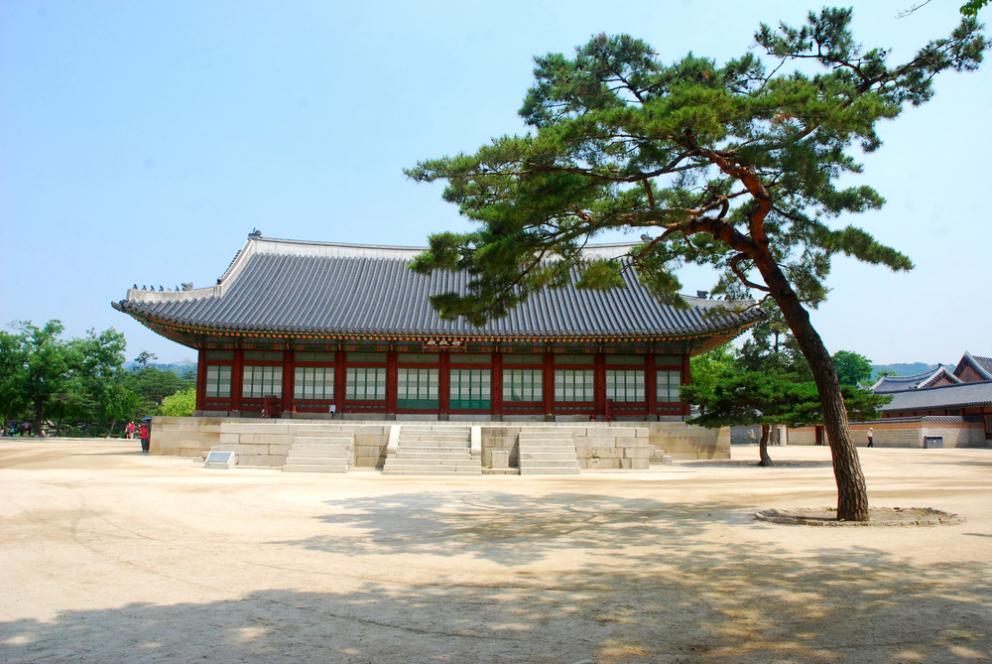
Teaching in Gyeongnam
Gyeongnam is renowned for its diverse landscapes, historical landmarks like Tongyeong’s Dongpirang Village, and scenic spots like Jinhae’s Cherry Blossom Festival, providing a rich and varied experience.
Gyeongnam is home to three million people, and is a significant agricultural region in Korea. The climate of Gyeongnam can differ significantly depending on your location within the region. Being around the mountains generally calls for more temperature extremes, while southern locations tend to be much more moderate due to its proximity to the sea.
One of the most widely-recognized temples in Korea can be found in Gyeongnam. The temple of Haeinsa, which was originally built over 1500 years ago, houses the Tripitaka Koreana and is very popular with tourists. The temple is one of the Three Jewel Temples of Korea. It can be found on Gaya Mountain. The Hallyeo Maritime National Park is also a popular tourist spot, attracting local and foreign visitors each year. Gyeongnam Official Website
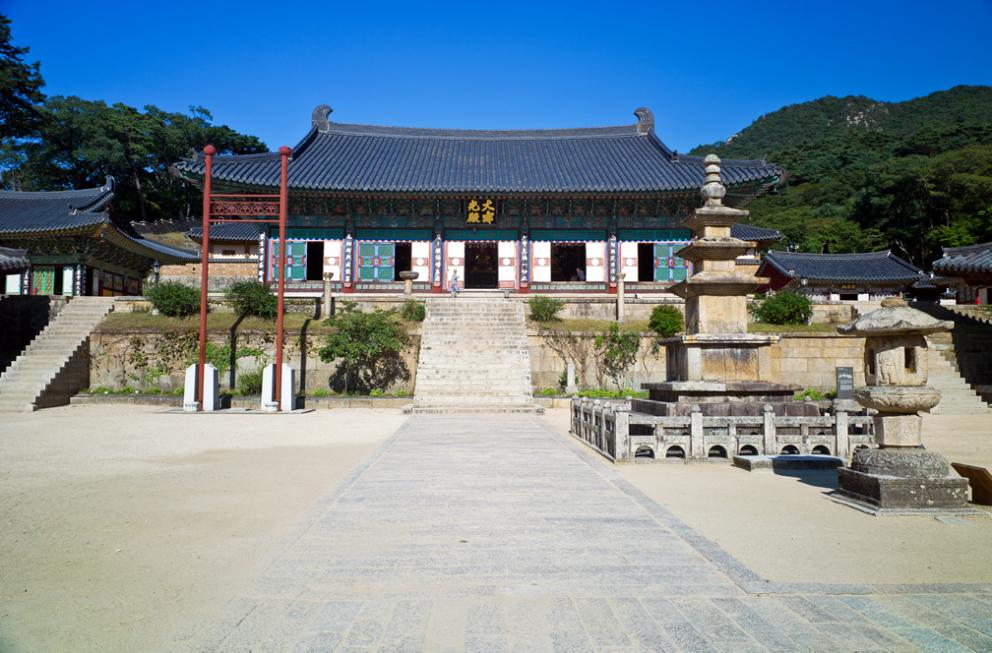
Teaching in Jeju
Jeju is famous for its stunning volcanic landscapes, unique culture, and attractions like Hallasan National Park and Manjanggul Cave, offering a picturesque and distinctive environment.
Jeju is a small, self-governing province in southern Korea. Because of its isolation from the rest of the country, the people of this area have developed a culture and language that is somewhat different from the rest of the country. Jeju’s natural beauty, mild climate, and wide variety of recreational options makes this area a popular location for tourism and for conducting business.
Jeju is regarded as a leisure paradise by many, with its beaches, its waterfalls, and scuba diving, hiking and para-gliding. The tallest mountain in Korea, Mount Hallasan, is responsible for creating Jeju Volcanic Island, a very popular sightseeing destination. This site has one of the most diverse types of flora and fauna found across many subtropical and temperature climatic zones, making it all the more appealing to tourists. Jeju Official Website
